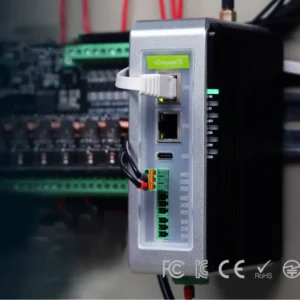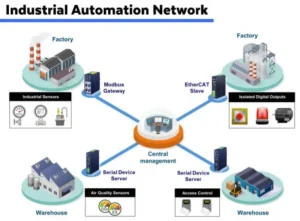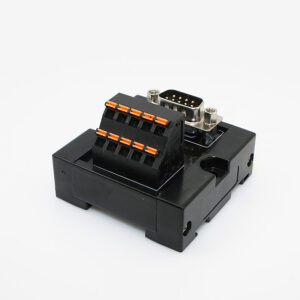The terminal block industry plays a crucial role in electrical connectivity, providing reliable and secure solutions for industrial automation, renewable energy, smart manufacturing, and more.
As industries evolve, the demand for more efficient, durable, and smart terminal blocks continues to rise. This
article explores the latest market trends, technological advancements, and future growth prospectsof the terminal block industry.

Part 1. Terminal Block of Current Market Trends
Part 2. Key Technological Innovations of Terminal Block
Part 3. Market Applications and Growth Potential
Conclusion
Part 1. Terminal Block of Current Market Trends
Industrial automation control system
Applied to PLC, industrial robots and other equipment, the terminal blocks realize high-density signal and power transfer, and the anti-vibration design (such as spring-type terminals) ensures the continuous operation of the
production line and reduces the risk of equipment downtime.

New energy power equipment
Used in scenarios such as photovoltaic inverters and energy storage systems, the high-voltage (1000V DC) terminals connect battery modules, and the IP67 sealing structure resists harsh outdoor environments, reduces energy loss, and improves system efficiency.

Smart building power distribution
In smart lighting and security systems, plug-in terminals simplify strong and weak current wiring, and modular design and real-time status monitoring functions reduce 30% of operation and maintenance costs, supporting building intelligent upgrades.

Part 2. Key Technological Innovations of Terminal Block
Our company caters to the development of the market and continuously innovates its products. These innovations solve the pain points of high energy consumption, inefficient maintenance, poor environmental adaptability, etc. in industrial scenarios, and promote the transformation of terminal blocks from “passive connection” to
“intelligent perception + active management”.
1. Material innovation
- High temperature/corrosion resistant materials:
- Such as ceramic-based composite materials (temperature resistance of more than 150°C),UV-resistant modified plastics (outdoor life increased by 50%)
2. Structural design optimization
- 1) Tool-free quick installation:
- Lever-type, spring-pressed terminals (such as PUSH IN technology),Wiring speed increased by 70%
- 2) High-density miniaturization:
- Micro terminals with a pitch of ≤3.81mm (such as Phoenix CLIPLINE complete),Suitable for 5G devices and IoT modules
3. Intelligent integration
- Terminals with sensors:
- Integrated temperature and humidity/current monitoring chip (such as
Weidmuller SmartXpert),Real-time data uploaded to the industrial Internet of Things platform
- Integrated temperature and humidity/current monitoring chip (such as
4. Green and low-carbon technology
- Detachable and recyclable design:
- The shell and metal parts are separated (in compliance with the WEEE Directive),Material recycling rate exceeds 90%
Part 3. Market Applications and Growth Potential
In the next five years, the terminal block market will present three major trends: “high-end, intelligent, and green”. New energy vehicles, 5G communications, and renewable energy will become the core growth engines, with an annual compound growth rate expected to reach 8.2% (2023-2028). Enterprises need to focus on material innovation and digital services to build competitiveness.
1. Intelligence and IoT integration

Predictive maintenance: Intelligent terminals with integrated sensors (such as temperature/vibration monitoring) are connected to the IIoT platform, with a market size CAGR of 18% (2023-2030).
2. Green Energy Transformation
Wireless power supply (PoE): Communication terminals that support Ethernet power supply simplify the wiring of smart factories.
Hydrogen energy equipment: Hydrogen embrittlement corrosion-resistant terminals (coating material optimization) are used in electrolyzers and fuel cell stacks. The EU’s hydrogen energy investment will exceed 55 billion euros in 2030.
Offshore wind power: IP69K protection grade terminals can cope with high
salt spray. The global offshore wind power installed capacity will reach
330GW in 2030.
3. Modularization and rapid deployment
Plug-in design: Prefabricated terminal blocks (such as AOSI PCB terminals) shorten equipment assembly time by 50% and adapt to flexible manufacturing needs.

Conclusion
The terminal block industry is evolving with smart technology, sustainability, and automation. Future trends focus on miniaturization, IoT integration, and high-performance materials. Companies investing in innovation and compliance will stay competitive. As industries like renewable energy and EVs expand, demand for reliable, efficient terminal blocks will continue to grow.




